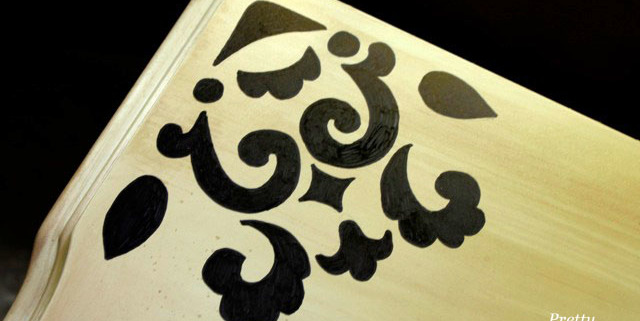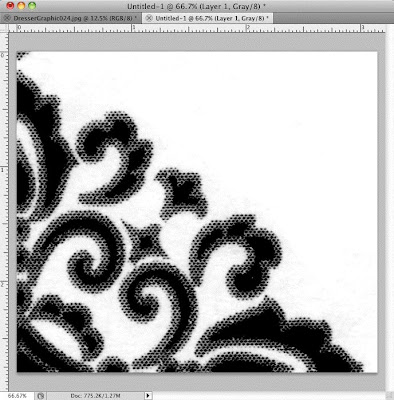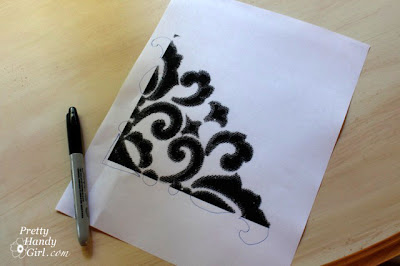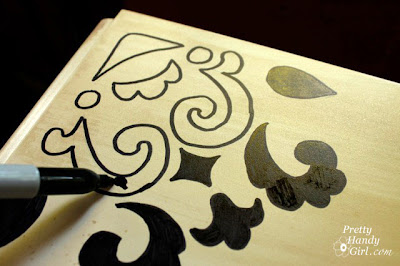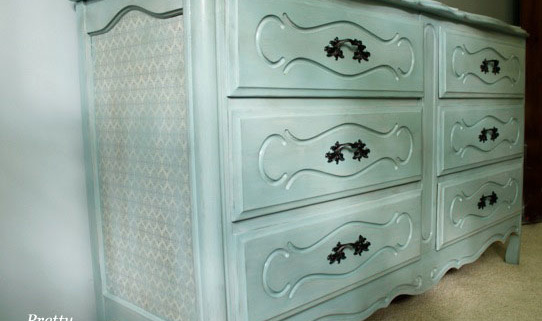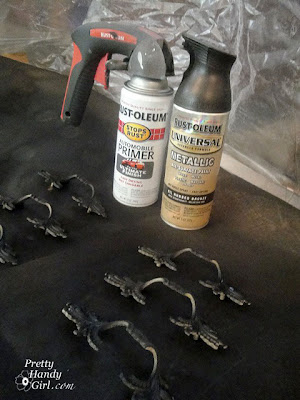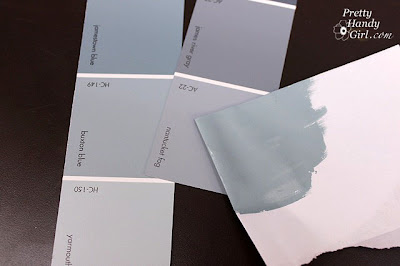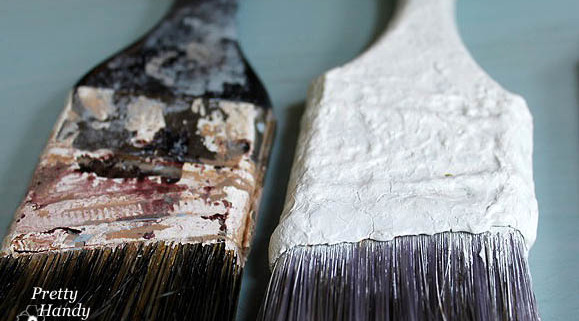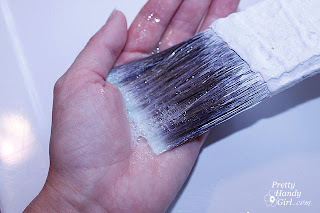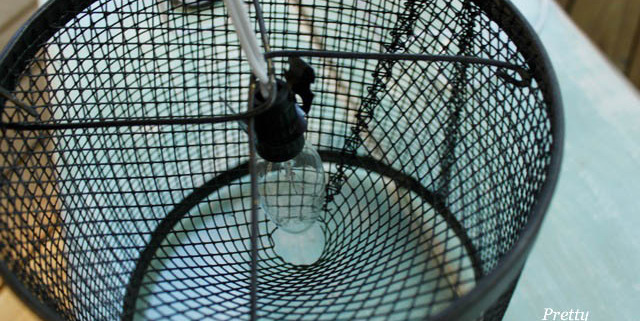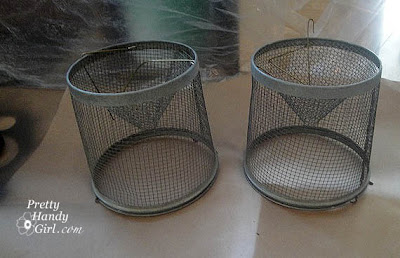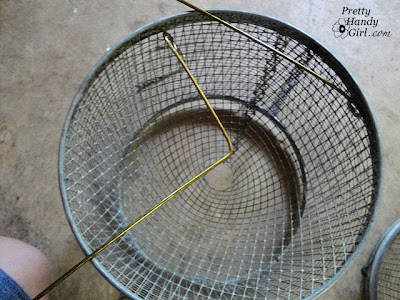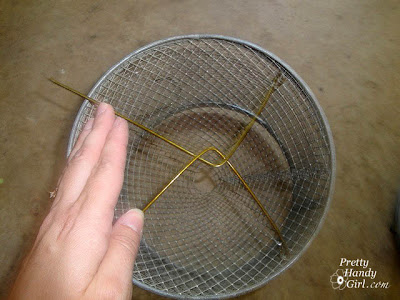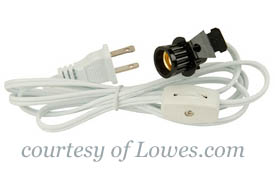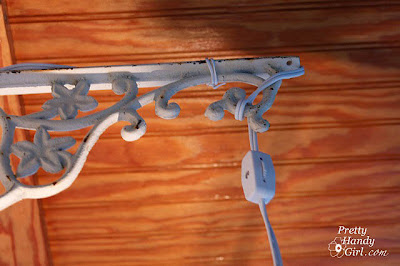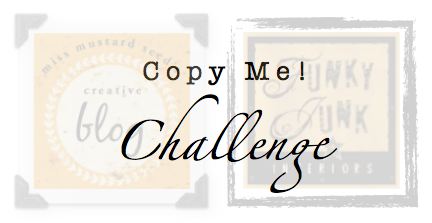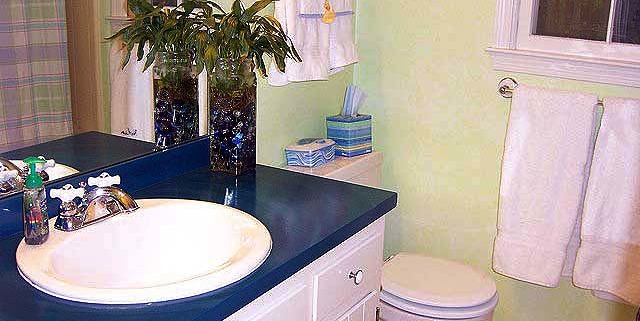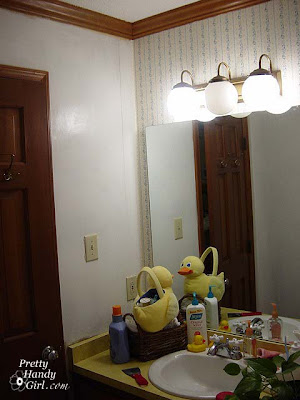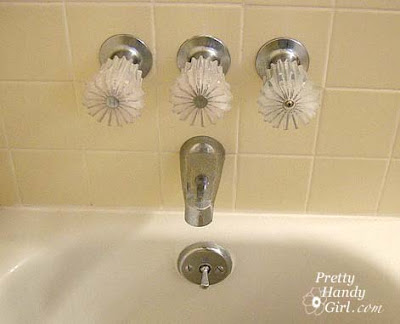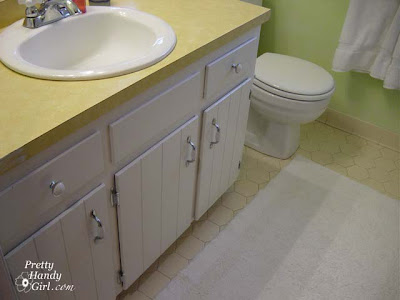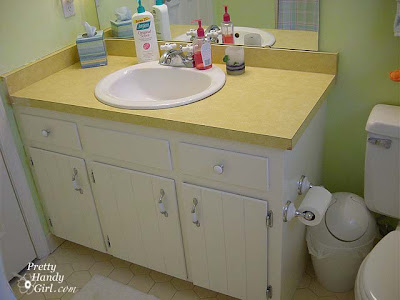I’ve been super busy this weekend finishing up some projects. I’m very excited and can’t wait to show you some of them.
However, because several of them are tutorials (which take a little longer to write up), I decided to share with you a guest bathroom makeover from our old house.
This poor bathroom had an identity crisis.
With its 1970’s light fixture,
Harvest gold laminate counter top and dark wood vanity,
Sunburst shaped handles that hurt your hands to use them,
 and Laura Ashley style wallpaper.
and Laura Ashley style wallpaper. The first thing we did was strip the wallpaper in this room. If you have never stripped wallpaper, there are two types of wall paper stripping projects. The easy ones and the hard ones! Luckily we had an easy one.
Awww, doesn’t Pretty Handsome Guy look happy?!
The walls had been primed before the wallpaper was attached (as opposed to gluing the wallpaper on top of the drywall (or sheetrock as some people call it.)
Forget the steamer, forget the chemicals, we used these tools:
- Cheap, cheap, cheap pink fabric softener mixed 1:1 with water
- Spray Bottle to pour your fabric softener mixture in
- Paper Tiger or wall scoring tool
- Wallpaper scraper – We really liked the Piranha shaver since it has a razor sharp blade
- Or Wallpaper Trim Tool
You start by scoring the wall with the Paper Tiger or similar tool. The more holes the better, so put on some dancing music and get busy.
Then you spray the walls with your fabric softener mixture. Really saturate them! Wait 15 minutes, then spray them again. Now, use your scraper to start peeling. I truly hope your sheets come off in nice big sheets like ours did. If not, you may have to have your walls re-skimmed with spackle or joint compound.
Or, I hate to mention this, but you could paint over the wallpaper. We have two rooms in our current home that this was done in (we know for a fact that the wallpaper was glued to the drywall without priming first.) If you take this route, I want to let you in on two secrets:
- Use an eggshell or satin finish paint (it will not show the edges or imperfections as easily.)
- Take the time to make sure all the wallpaper seams are glued down and then spread some joint compound or spackle over the seams and sand it smooth. This will get rid of the tell-tale seam lines when you paint over wallpaper.
After you have removed all the wallpaper you need to wash your walls really well to remove the glue. We saturated the walls again with the fabric softener and then cleaned it off. Finally, we used TSP cleaner (available at any home improvement or hardware store) to get the walls perfectly cleaned.
Then I painted the walls a bright Nickelodeon slime green. I kid you not, but I didn’t take a picture of it in that state. My friends thought I had flown the cuckoo’s nest. But, I went back with a creamy lemon glaze and ragged it on top. The result was a beautiful lime sherbert color (perfect for a little boy or girl’s bathroom.)
Next, the light fixture had to go, and it went quickly!
I replaced it with a four light chrome fixture.
Then, I had to paint over that ugly vanity cabinet:
Now that is looking better! I added new chrome/porcelain pulls.
But, that harvest gold vanity would not stop shouting “groovy dude” whenever I saw it. So, it had to go too. Unfortunately, we were on a limited budget, so I had to get creative.
I fixed the chipped corner and seams with wood putty.
Then I sanded and primed the countertop with Zinser Oil based primer
(A necessity to get the surface prepped with a super adhesion coat of primer)
so I could do this:
Beautiful blue water reflections
I painted the vanity top and then added five coats of polyurethane to seal it. I recently had the opportunity to visit our old house and couldn’t wait to see how the vanity top held up over the years. It really held up better than I expected. There was some slight chipping where the back of the sink met the back splash. I should say that our neighborhood has very hard water and this is where the splashed water would hide and sit. So, for the cost of paint, we had a new vanity top that has held up to use for over three years so far.
So, are you ready to see the final reveal? Here it is:
Before:
After:
In case you are wondering what ever happened to those sunburst tub faucet handles:
Yes, that is me, installing new valve stems at 8.5 months of pregnant bloated-ness.
That was also THE day I went into labor!
Anyone else have some crazy last minute pregnancy stories?

